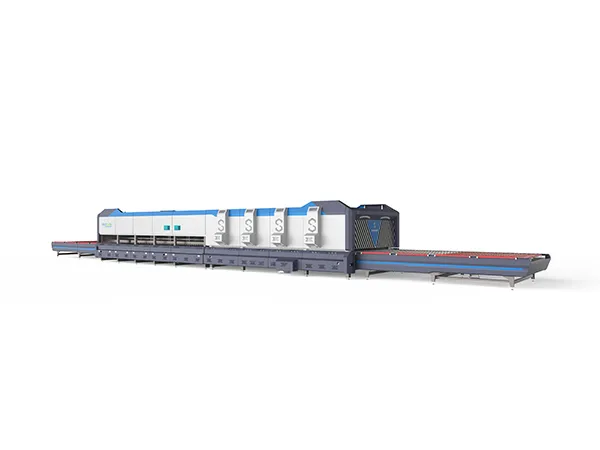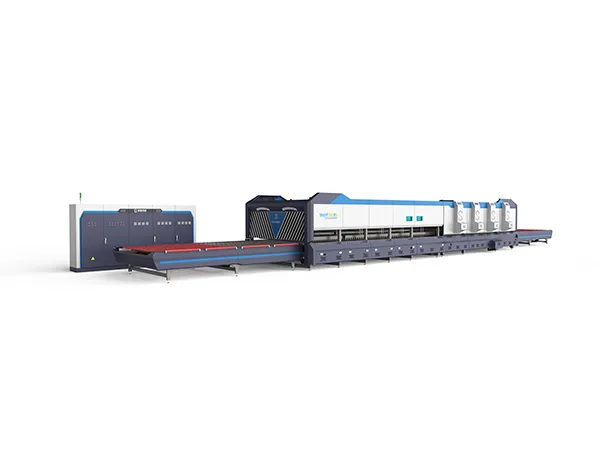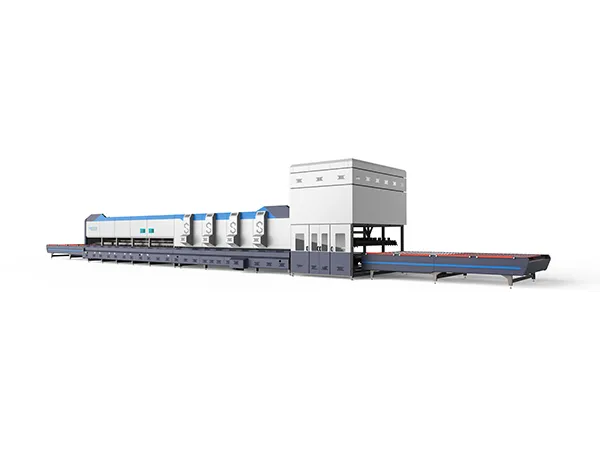The specifications of a glass tempering furnace can vary depending on factors such as the type of glass being tempered, the production capacity required, and the specific features desired by the manufacturer.
Glass tempering furnace specifications
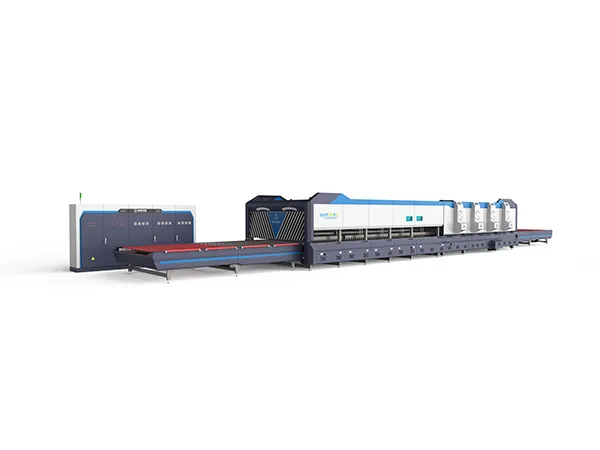
Maximum Glass Size: This indicates the largest dimensions of glass that the furnace can accommodate. It could be specified as the maximum width and height, and sometimes also the maximum thickness.
Heating Temperature: The maximum temperature to which the furnace can heat the glass. This temperature can range from 600°C to over 700°C, depending on the type of glass being tempered.
Cooling Method: Specifies the method used for rapid cooling (quenching) of the glass after heating. This could be forced air cooling or high-pressure air cooling.
Production Capacity: Indicates the number of glass sheets that can be processed per unit of time, typically measured in square meters or square feet per hour.
Heating and Cooling Time: The time it takes for the furnace to heat the glass to the required temperature and then cool it down to room temperature.
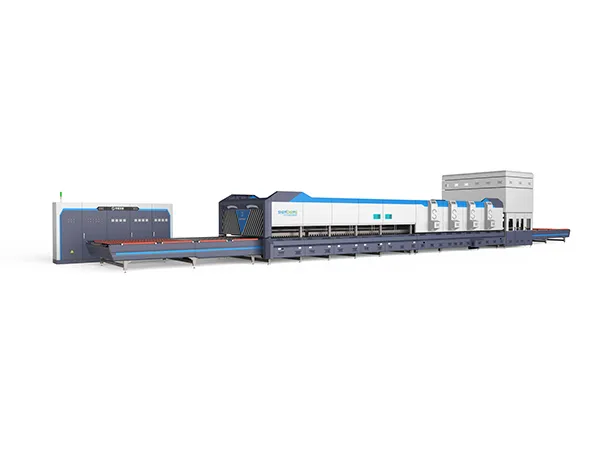
Energy Consumption: Specifies the power consumption of the furnace, usually measured in kilowatts per hour (kWh).
Control System: Describes the type of control system used to monitor and regulate the heating and cooling processes. This could be manual, semi-automatic, or fully automated with computerized control.
Safety Features: Includes any safety mechanisms or protocols implemented to ensure the safe operation of the furnace and to prevent accidents.
Footprint and Installation Requirements: Specifies the physical dimensions of the furnace and any special installation requirements such as power supply, ventilation, or floor load capacity.
Optional Features: Additional features that may be available depending on the manufacturer and model, such as edge deletion capabilities, convection heating, or infrared heating elements.
These specifications can vary significantly between different models and manufacturers of glass tempering furnaces. It's essential to consider your specific production needs and requirements when selecting a furnace for your operation.







